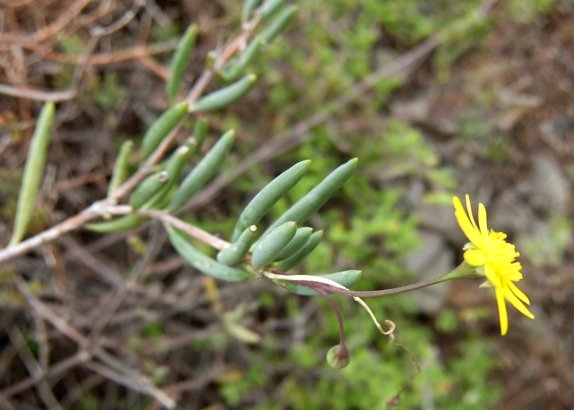Crassothonna

Author: Ivan Lätti
Photographer: Thabo Maphisa
Crassothonna is an Asteraceae genus of perennial herbs, shrubs and shrublets separated from the Othonna genus around 2012. Some of the species have tuberous roots, the stems branching little or much.
The generic name, Crassothonna, is derived from the Latin word crassus meaning thick or dense and the Greek word othone meaning sheet, linen or cloth, probably referring to the soft-textured leaves.
The simple, alternate leaves are succulent and cylindrical to club-shaped. Variable leaf thickness occurs, the colouring green to blue-grey and the surfaces hairless, covered in a powdery bloom or minute papillae. The leaf-tips are rounded or bluntly pointed, sometimes ending in a mucro. Petioles are short or absent.
The flowerheads grow solitary or in corymb-shaped inflorescences on peduncles that vary in length and thickness with one or several small bracts present. The involucre consists of one row of five to eight bracts cohering in a soft, bell-shape around the floret bases. The involucral bracts are joined at the base. They have three to five veins and membranous margins. The receptacle is hairless, mostly flat but sometimes convex.
The ray florets are female, tubular at the base and ending in a strap-shaped, yellow, rarely white blade. Their fruits are spindle-shaped to obovate and ribbed, veined or hairy with numerous pappus bristles.
The many, tiny disc florets are bisexual but often functionally male and fruits are seldom produced. The stamens have flat or oblong appendages at their tips.
All of the about 14 species occur in South Africa and Namibia.
The plant in picture is Crassothonna cylindrica (Compositae Newsletter, 50, 2012; iNaturalist; http://redlist.sanbi.org).

